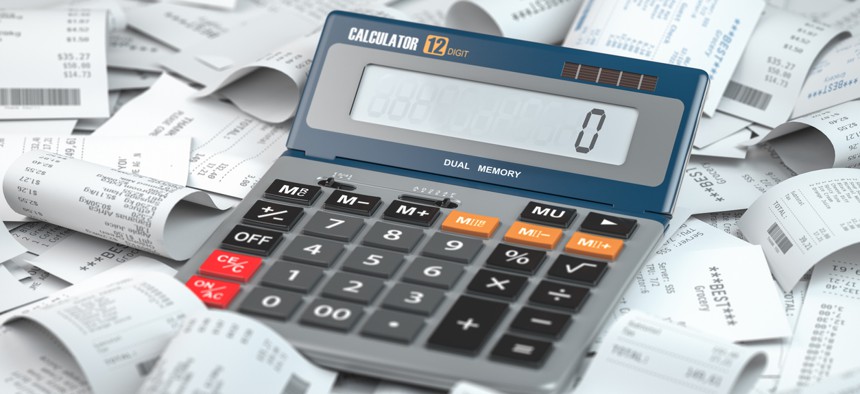The Tax Landscape is Changing. Here’s How States and Localities Can Keep Up With a Moving Target

istock.com/Bet_Noire
COMMENTARY | As businesses adjust the way they operate in a post-Covid era, state and local governments must re-evaluate how to collect taxes and maximize revenue streams.
State and local governments’ tax revenue has been dramatically impacted by the pandemic, resulting in many facing a severe budget crunch. From March to August 2020, total tax revenue at the state level declined by 6.4%, and state governments were suddenly facing hundreds of billions in lost revenue across the board.
Better revenue management will be a top 2021 priority for state and local governments looking to thrive in the post-Covid era. That’s because Covid-19 hasn’t just depressed tax revenues; it’s changed how tax revenue comes in and where it can be found. States and localities will need to adopt data-transparent, cost-efficient and effective technology tools and practices to keep up with the changing landscape and maximize tax compliance and collection.
Tax revenue has always been a huge part of our economy. State and local tax revenue accounts for about 9% of national GDP. But taxes come in all shapes and sizes and don’t contribute equally to total tax revenue across municipalities and states. That means a major disruptive event, like the coronavirus pandemic, can shift the way tax revenue comes in, creating a disparate economic impact and changing the way taxes should be collected.
Take sales tax, for example. In 2017, state and local governments took in about $389 billion in general sales tax revenue, amounting to about 12% of overall revenue. In 2020, sales tax revenue decreased by about $50 billion, mostly due to the reduction in consumption of heavily taxed goods and services like restaurants and hotels. However, the overall decline in sales tax revenue doesn’t tell the whole story, as the impact from declining sales tax revenue wasn’t felt equally across the country.
Only 46 states collect general sales tax. Of those states, some rely on sales tax more heavily than others to balance their budgets. These differences in revenue management led to significantly different Covid-19 outcomes. New research has found that the more a state or local government relied on sales tax income, the higher its unemployment rate was among government employees.
While sales tax revenues may have gone down, other tax revenues started to go up. As more people work remotely and relocate, property taxes in some municipalities will rise. And the increase use of digital food delivery and takeout platforms like Uber Eats and DoorDash presents yet another lucrative tax revenue stream.
A similar story can be told about many other tax revenue streams. With stagnant business growth in 2020 and many offices retooling their employees for remote work, business licensing taxes and occupational taxes are likely to decrease. At the same time, alcohol sales have increased dramatically and alcohol taxes have grown with them.
Maximizing the Shifting Tax Landscape
What we see across revenue streams, industries, municipalities and states is a shifting tax landscape, where previously reliable revenue streams are drying up while others are widening and increasing. The key for governments will be their ability to comprehend this changing tax landscape and tap into it effectively by maximizing compliance.
Maximizing compliance starts with an internal review of current processes. As tax revenue streams shift and change, governments need assurance they’re getting what is owed to them. But all too often, cumbersome paper processing, opaque data and an over reliance on manual work hamstring a government’s capacity to get a clear overview of compliance or noncompliance, especially when tax realities are rapidly changing. A comprehensive, internal audit can ensure that doesn’t happen.
Also, governments must prioritize adopting technology that streamlines tax collection and administration. An automated tax management system, for example, can make sure governments reduce human error and get their tax revenue quickly and easily. Many of these systems are cloud based and can be quickly and easily implemented for any jurisdiction.
Meanwhile, citizens are expecting and oftentimes demanding an easier and more convenient way to meet their obligations. If governments don’t have the digital portals and online payment options that facilitate paying taxes, licensing fees and fines, then a lot of revenue will potentially get lost in the confusion and upheaval.
The main idea is that better administrative practices and new technologies can help governments enhance tax compliance by making tax collection and payment easier and more efficient for both governments and citizens. By doing so, state and local governments can unlock their 2021 revenue streams and face the future of our changing economy and society with strength and success.
Kennon Walthall is a senior vice president at Avenu, which offers administrative and financial support to government officials.
NEXT STORY: A $4.5B Pool of Economic Recovery Funds States, Localities Can Tap Into





